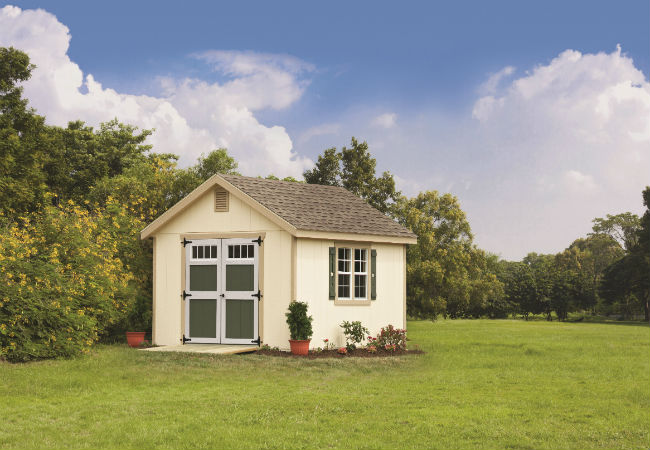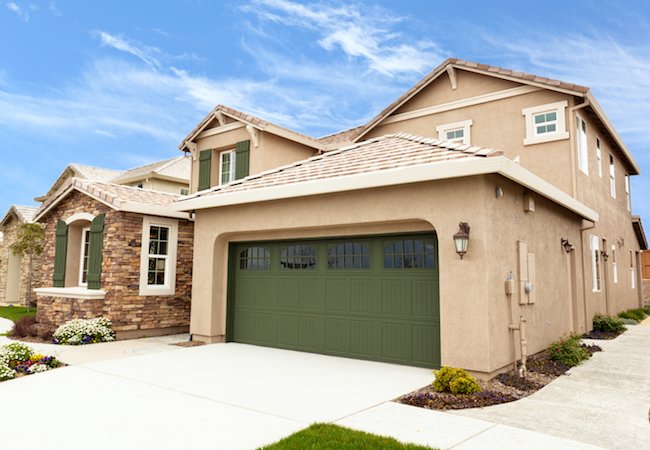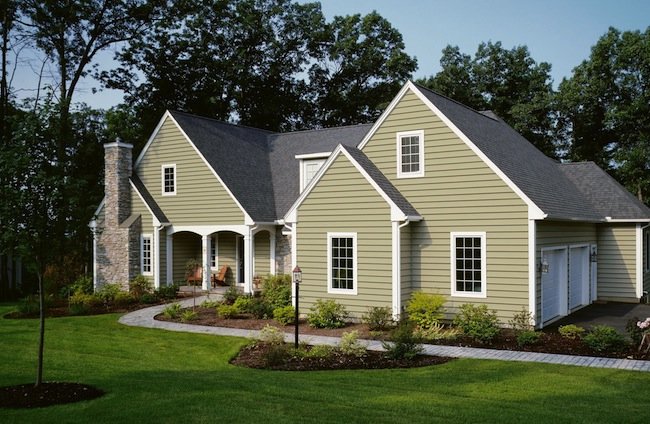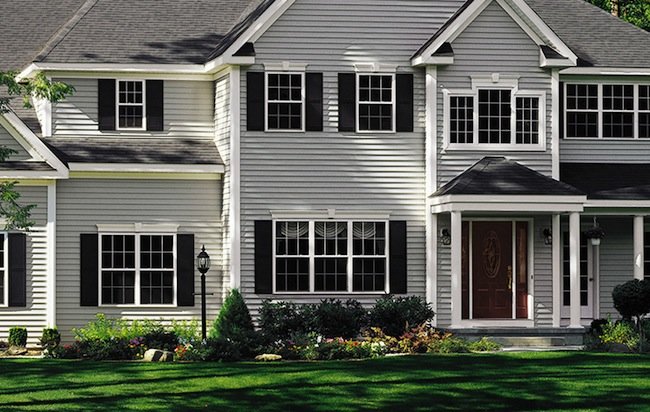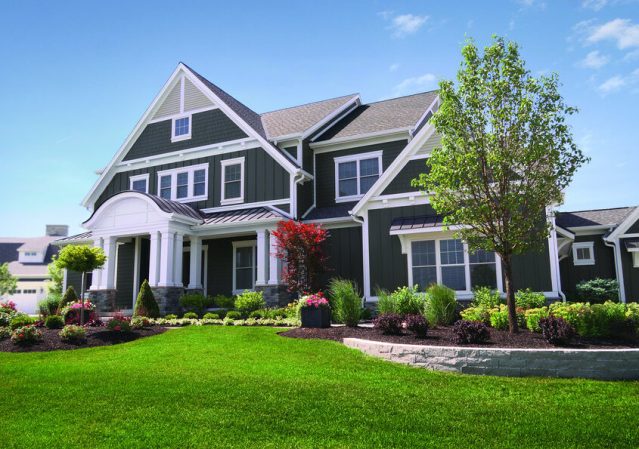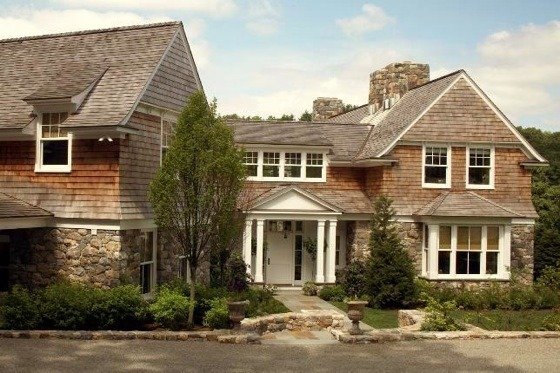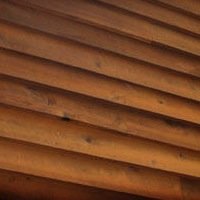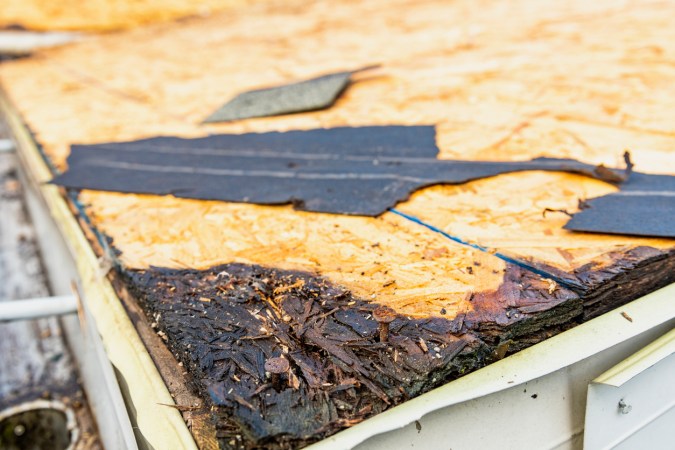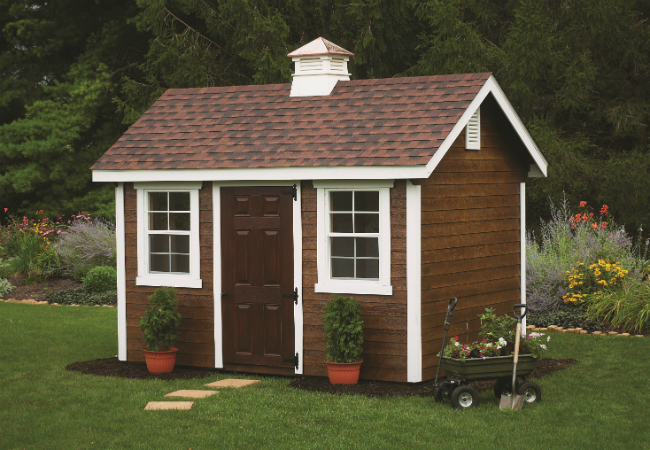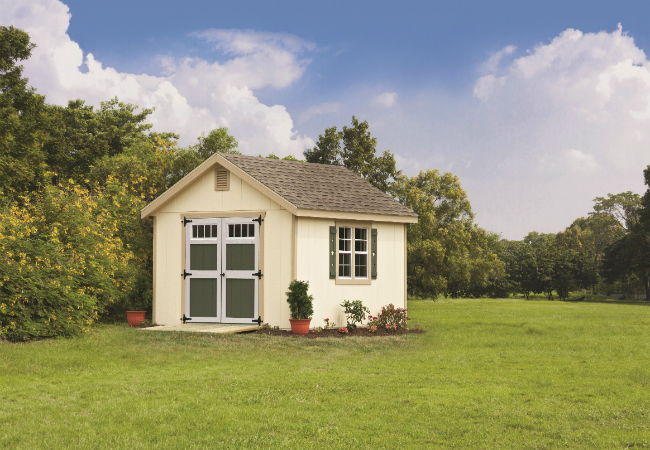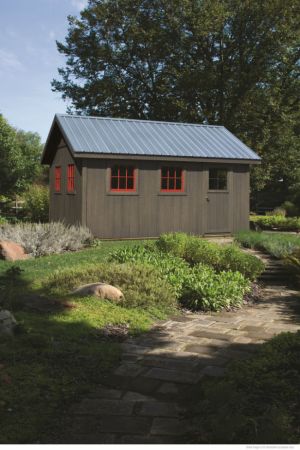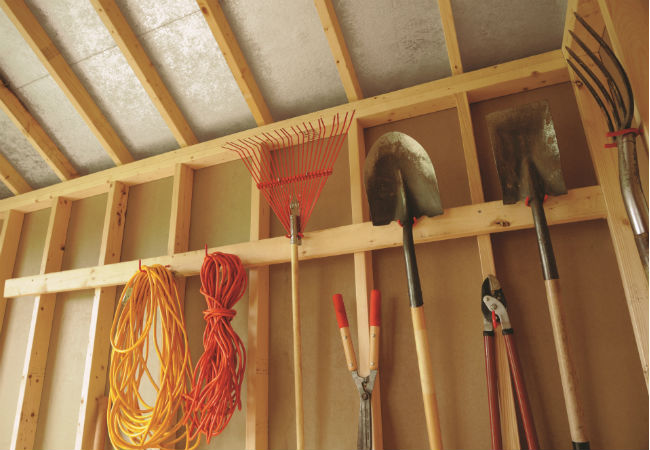We may earn revenue from the products available on this page and participate in affiliate programs. Learn More ›
Whether it’s called SmartSide, Catawba, or TruWood, engineered wood siding products all claim to have a technological edge over their real-wood counterparts. These products are engineered to eliminate flaws, resist deterioration, and be cost effective to install and maintain.
What Is It Made Of?
Generally speaking, engineered wood siding products are made of wood chips, bound together by resin. Take, for example, LP Building Products’ SmartSide line of siding and trim. It’s comprised of wood strands that are coated with a resin binder and compressed to create a board. Each SmartSide piece is also treated using LP’s SmartGuard zinc-borate treatment system to protect against termites and rot.
The boards are then coated with a moisture-resistant overlay that is embossed with a cedar-grain pattern for an authentic appearance. “The process of treating each wood wafer with zinc borate, using a heavy-duty exterior glue, and pressing the product under heat and pressure, results in one solid piece of wood,” says Ben Skoog, Business Marketing Manager for LP’s SmartSide. Both LP’s SmartSide and Collins Products’ TruWood siding are sold in longer 16-foot boards for fewer seams and less waste.
Engineered Wood Siding Costs
Affordable building products are defined by purchase price, installation costs, and maintenance. Engineered wood siding costs about half the price of real wood, and it’s easier and less costly to install. That’s because it is lighter in weight than wood and features advances that make installation easier, like LP’s SmartLock self-aligning edge design. Engineered wood siding can be purchased pre-primed, ready to paint, or pre-finished in any number of finish options, which reduces the field and labor time once installed.
Also, note that engineered wood siding products tend to be backed by generous warranties. Collins and LP products both offer 30-year transferable warranties on their engineered siding systems. LP’s SmartSide also adds a seven-year, 100 percent labor and replacement warranty.
Engineered Wood Siding Drawbacks
Engineered siding does have its flaws. Moisture remains a common enemy, and the engineered wood siding industry has suffered a number of class-action lawsuits due to moisture-related problems stemming from product imperfections and installation errors. “Our earlier attempt at engineered wood siding, called Inner-Seal, was not made or treated the way SmartSide is and the result was product failure,” explains Skoog, Since the revamping of their siding line, SmartSide products have been installed on more than 1.5 million homes.
Is It Eco-Friendly?
These engineered products are considered environmentally friendly since they help to prevent widespread clearing of trees for building purposes. Both fiber cement and engineered wood use wood wisely and have little negative impact on our forests. In fact, Collins Products TruWood engineered wood siding is certified by the Forest Stewardship Council, an independent organization that recognizes wood products taken from forests in a managed and socially responsible manner.
What About Fiber Cement Siding?
Fiber cement has been around for nearly a century and, like engineered wood siding, has certain advantages over natural wood. While it was once made with added asbestos, fiber cement siding today is made from a mixture of Portland cement, cellulose or wood fiber material, sand, and other components. It can be formed into a variety of siding patterns, have a smooth or embossed face, or be textured for a cedar look. A special curing process leaves the final product with a low-moisture content, making it resistant to warping and conducive to paint application.
Installed much like real wood siding, fiber cement siding comes in the same lengths and widths as wood siding and is installed the same way. It is more difficult to cut than real or engineered wood, and manufacturers insist that installers wear masks and goggles to protect against the harmful dust produced by cutting.
PROS
Fiber cement siding costs about half as much as real wood, is virtually maintenance-free, will hold paint three times as long as real wood, and is easy to clean. With strong warranties for durability, homeowners can be assured that little additional money will go into maintaining the siding.
The product’s main selling point is its durability: It is resistant to harsh weather, insects, and rot. CertainTeed and Cemplank back their products with warranties comparable to those offered by engineered-wood siding companies—CertainTeed’s WeatherBoards fiber cement siding comes with a 50-year limited transferable warranty. Fiber cement is also marketed as fire-resistant, making it an ideal siding choice for homes in wildfire regions.
CONS
Fiber cement siding is vulnerable to moisture invasion, particularly if installed incorrectly. Failure to properly install fiber cement siding can lead to mold and rot in the sheathing or structural supports. Installation is also a concern with fiber cement siding—it weighs about 1.5 times as much as wood, and requires special tools for cutting.

